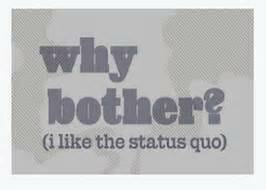 When people hear that I consult to nonprofits on communications, sooner or later, they ask me, “Dennis, is it really worth it? Can I raise funds for my organization on social media?”
When people hear that I consult to nonprofits on communications, sooner or later, they ask me, “Dennis, is it really worth it? Can I raise funds for my organization on social media?”
I’m sorry, folks, but those are two different questions.
Question 1: Are Social Media Worth It for Your Nonprofit?
First, think about what you’re trying to accomplish with your communications. As we saw yesterday, you need a strategy. Who are you trying to reach? What do you know about them? If you engaged them successfully, what would they do?
If you know the answers to those questions, you will know whether or not social media are an important part of your strategy. Even if they are, there are ten things you should take care of before you ever start on social media.
But in the end, chances are social media will be worth it for your nonprofit. Why? Because you need loyal supporters.
People give their first gift to your organization for a variety of quirky reasons. When they continue to give, it’s for one reason: because they have come to know, like, and trust you.
You will win loyalty by giving people ways to get to know, like, and trust your organization…and nothing lets you do that more often, in a more convincing way, at less cost, than social media.
Question 2: Can I Raise Funds on Social Media?
Let’s turn this question around. When you go on Facebook, or Twitter, or Instagram, are you looking for a chance to donate?
No?
Well, neither are your donors.
People use social media to stay in touch with their friends. Your challenge is to make people regard your organization as a friend.
A friend who asked you for money every time he came over to your house would soon stop getting invited. If your organization asks for money whenever you’re online, people will stop inviting you onto their screens.
The 80-20 Rule
If you really understand social media, you will follow the 80-20 rule. 80% of the time your organization is on social media, share content that’s interesting to your audience.
- Engage in conversations with them. You know they’re interested if they’re the one who brought up the topic!
- Post information that they won’t find everywhere else. Make them feel smarter.
- Post “fun” content that they will enjoy. If it relates to your cause, great, but as long as it doesn’t actually conflict with it, it’s all good. Friends are not all business–and you want to be their friend.
20% of the time, call your audience to action.
- Poll them, or ask them open-ended questions.
- Invite them to lobby their elected officials, online.
- Offer them a chance to volunteer.
And yes, perhaps once in a great while, you can ask for money. It will work better if it’s directed toward a specific, tangible goal, and if they can track their progress toward that goal in real time. General appeals rarely work on social media.
So Tell Me Again, Why Should I Bother?
Maybe you shouldn’t. If your specific donor pool isn’t on social media– because of language barriers, for instance–maybe you shouldn’t be either.
But if your audience is on social media and you’re not, what you’re telling them is, “You’re not worth it to me.”
You won’t spend the time to reach them where they like to be? Then you are not their friend. And over time, they will give their attention, time, and money to the organizations that make them feel valued. Being one of those organizations–that’s why it’s worth it.
